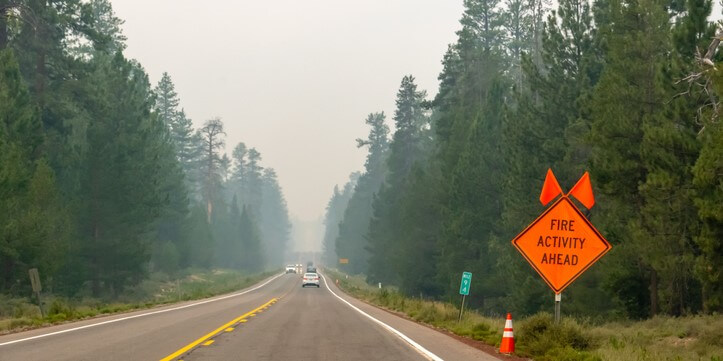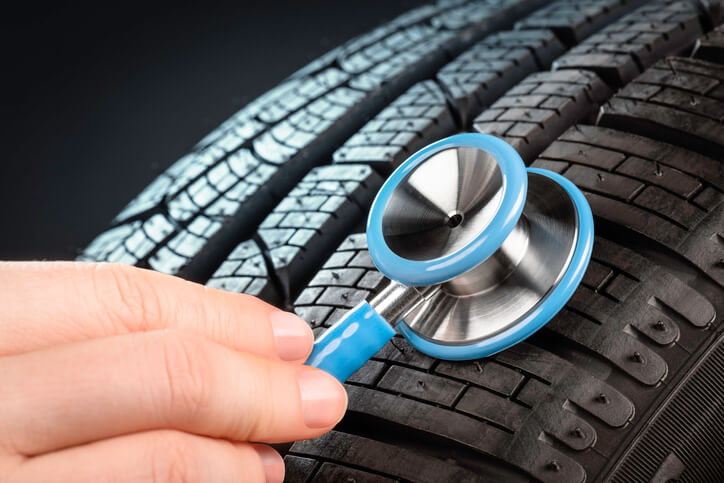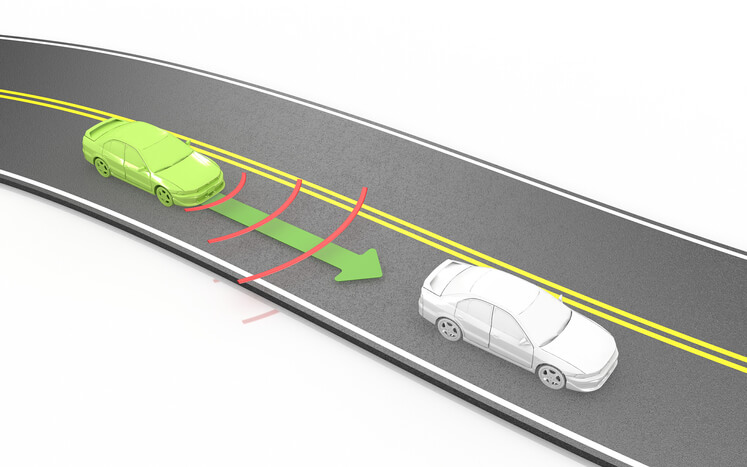The road can be a scary place for any new driver, but it feels especially so if your vehicle breaks down or you’re having a roadside emergency. What should you do, what do you need to carry in your vehicle, and how do you stay safe while awaiting help?
Print out this article and keep a copy in your glovebox - it may help save your life someday
Preventing a breakdown in the first place
- The best way to avoid a roadside breakdown is to keep your vehicle in good running condition. Make sure it gets regular oil changes, other fluids as needed (like coolant and wiper fluid), brake service, and other needed maintenance at the proper manufacturer-recommended times. If you hear an odd noise or a warning light comes on, don’t ignore it.
- Keep your tires properly inflated, rotated, aligned, and replaced. Because tires are literally your vehicle’s shoes and it’s only point of contact with the road, it’s critical to not let them get too worn-down. And be sure to check your tire pressure every week; both underinflated and overinflated tires can lead to dangerous blowouts, loss of control, and potentially deadly crashes. And don’t forget your spare!
Never stop in a “live” lane of active traffic, if possible
What to carry in your vehicle in case of a breakdown
Most modern vehicles are amazingly reliable, but sometimes they do break down, even with proper maintenance. Depending on where this happens, the weather conditions, and how long it takes to get help, you may need to spend a few hours or even up to a day or two in the vehicle in frigid winter or hot summer temperatures, and it’s best to be well-prepared.
This list may look long, but each item has a specific purpose:
- Current owner’s manual in the glovebox (especially for instructions on changing a tire or what a dashboard warning light means)
- A charged smartphone for making calls for roadside help
- In case your tire goes flat, a spare tire (but only if it’s in good condition, and fully inflated), vehicle jack, tire iron, and working tire gauge (preferably a good-quality one)
- Jumper cables (again, make sure they’re good quality, and the longer the cords, the better) or a portable battery jumper device
- An extra bottle of oil and coolant (make sure they’re appropriate for that make of vehicle)
- A jug of windshield washer fluid (for clearing off bugs in summer and salt spray in winter)
- A small shovel (for scooping out snow, mud, or dirt around stuck tires or wheel wells)
- A few basic tools like a screwdriver and a sharp knife
- A roll of electrical tape (for taping up a blown hose or holding things together)
- Clean rags for wiping grease and plastic bags for disposal
- A reflective safety vest you can wear outside the vehicle (keep this under your seat so you can put it on before getting out of your vehicle, especially at night)
- Flares, reflective triangles, or portable lights to alert others of your presence
- A working flashlight (keep this within easy reach from the driver seat)
- Pepper spray for self-defense (again, within easy reach from the driver seat)
- A basic first-aid kit with bandages, gauze, and antiseptic
- A spare phone charger and cord (and keep your phone charged as much as possible in case your vehicle battery goes dead, and you need to make multiple calls for help)
- A warm blanket or jacket (especially for winter weather)
- · At least two one-gallon jugs of water (for both drinking and using as emergency coolant)
- Nonperishable, high-protein, high-energy foods like granola bars, beef jerky, or trail mix · Finally, keep a piece of paper in the glovebox that lists the following:
- Phone number of a roadside assistance service like AAA
- Phone number of the insurance company
- Phone number of a local dealer or mechanic where the vehicle should be towed to
- Info on what drive-type the vehicle has (front-wheel, rear-wheel, or all-wheel drive); this is important because it dictates the type of tow truck needed (all-wheel-drive vehicles require a flatbed truck or special tow dollies)
If you’re on a highway or interstate, do NOT get out of your vehicle and walk to get help
How to get off the road safely if your vehicle breaks down
First, not every mechanical failure or warning light means that the vehicle is undrivable. But, if you hear a loud popping or rattling noise immediately followed by heavy vibrations or shaking, a tire may have blown or is going flat. Or a light that comes on in the dashboard along with a noise may mean a mechanical failure. Or if smoke or steam appears from under your hood, you may have a blown radiator, a leaking hose, or a fire. And, if your vehicle has lost power, it may be very hard to steer.
In all these cases, you need get off the road and pull over on the shoulder (preferably on the right) or on a side street as quickly and smoothly as possible. Never stop in a “live” lane of active traffic, if possible, because you may get hit from behind or cause crashes behind you. Make every effort to get to the shoulder, even if you must drive on an exposed wheel for a short distance. Replacing a wheel is much easier than recovering from an injury — or worse.
Follow these steps, in this order:
- Immediately check your mirrors to see who’s around you and where they are, as their presence and location affect how ‘ll get off the main roadway. Aim to get to the right shoulder if you can, but if you’re in the left lane or cannot safely maneuver to the right, you can pull over on the left shoulder.
- Turn on your turn signal or hazard flashers right away to alert others that you’re in trouble.
- Lift your foot off the accelerator and try not to brake as you safely and smoothly change lanes to reach the right shoulder (or left if need be). Never brake hard, as a loss of tire pressure may have affected the car’s steering; sudden braking can cause you to lose control of the vehicle and crash.
- Once you reach the shoulder, come to a gentle stop as far from the active roadway as safely possible (but not so close that you end up in a ditch or close to a dangerous edge). Shift the gear lever into Park and engage the parking brake as well. Keep your hazard flashers on to make your vehicle more visible to others.
- If you can’t reach a shoulder and are stuck in a live lane or are blocking traffic, call 9-1-1 right away. The dispatcher will quickly send out patrol cars to safely direct traffic around you and arrange for towing help.
underinflated and overinflated tires can lead to dangerous blowouts
What to do once you’re safely stopped
- Stay inside (unless smoke or fire is coming out of the engine compartment – in that case, get out and as far away as possible from the vehicle). If you do step outside your vehicle to check for damage, put on a reflective safety vest; if you have one, check your mirrors for passing traffic, and minimize the amount of time you spend outside. Passing motorists sometimes get distracted by a stopped vehicle and inadvertently steer right into it, especially a night; you’re much safer if you stay inside.
- But, keep your seatbelt on at all times while you’re waiting inside your vehicle. That way, if someone does crash into you, you’ll be far less likely to get ejected through a window or be thrown into the path of an oncoming vehicle or the side of the road.
- If you do have to wait outside your vehicle, stay as far away from the active roadway as possible to minimize your chances of getting struck by a passing vehicle.
- Use your smartphone to call for help, either through family, friends, roadside assistance like AAA, a local towing company, or 9-1-1. Conserve your phone’s battery power in case you need to make multiple calls.
- If you’re on a highway or interstate, do NOT get out of your vehicle and walk to get help. Doing so is incredibly dangerous and many people have been struck and killed by passing motorists this way. People also get disoriented in dangerous winter storms or foggy conditions, and, if they’ve left their vehicles, police officers or emergency crews sometimes cannot locate them until it’s too late.
- If you don’t have a smartphone or there isn’t enough reception to make a call, try flagging down a passing motorist for help. It’s best to not hitch a ride with a stranger, especially if you’re female. Instead, ask them to call the police or get a tow truck for you.
It’s always best if you can stay with the vehicle until a tow truck arrives. If, you do need to leave your vehicle unattended by the side of the road or can’t be present when towing help arrives, do the following:
- Call the towing company to let them know your vehicle’s whereabouts and to arrange a location to leave the key outside the vehicle for them.
- Call the police to let them know that you’re temporarily leaving a vehicle behind while seeking towing assistance or leave a note on the dashboard explaining the situation and a phone number where they can reach you. Notifying law enforcement also reduces the chances of them impounding the vehicle. In some cases, they may need to get it towed if it sits more than 24 or 48 hours.
- Call your insurance company and alert them to the fact that you’re leaving it unattended while it awaits towing.
- Remove your purse and all valuables from the vehicle to prevent theft.
- Leave your vehicle’s hazard flashers on or hang a brightly colored cloth from the window to alert other drivers of its presence.
- Lock your vehicle but hide the key outside in a predetermined spot so the tow truck operator can access the vehicle.

















